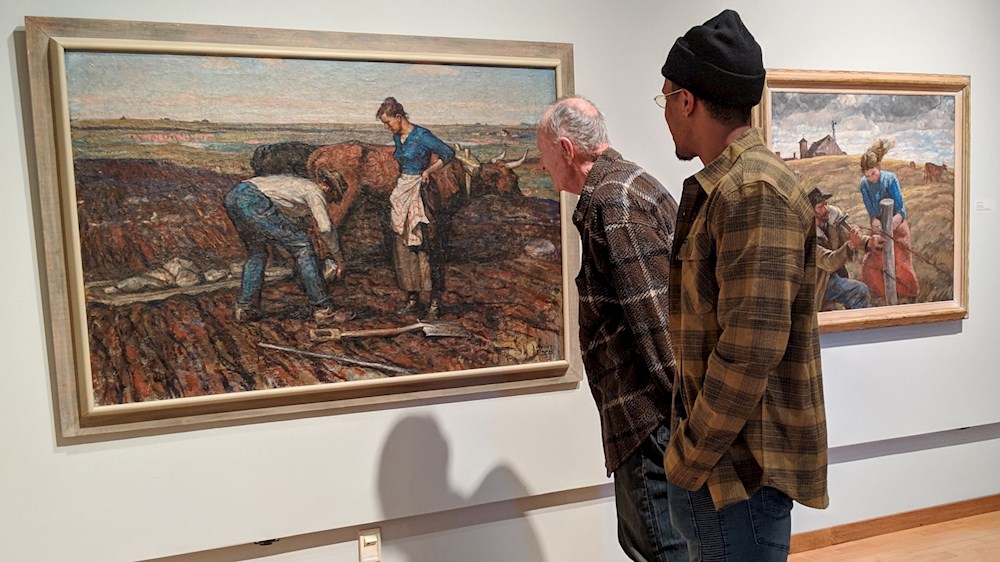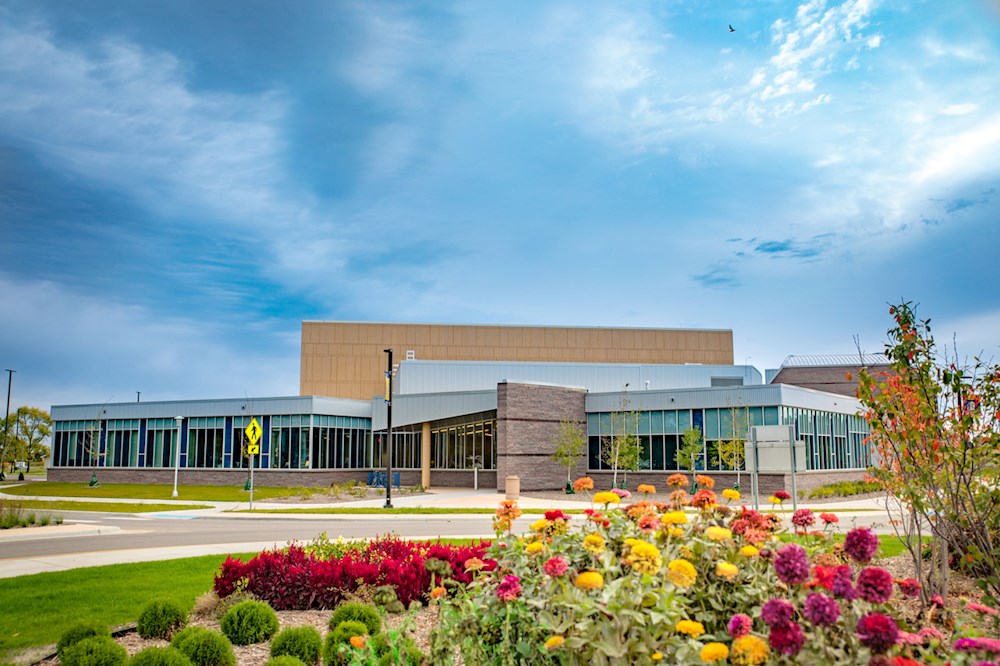- DataArts News
South Dakota Arts Community Gains Success With Government Support
- Posted Oct 01, 2019
Government and arts organizations collaborate to build a support system for artists, students, and the community at large, putting the small city of Brookings, SD on a national list.

The small community of Brookings, South Dakota, has made a grand entrance into a national report ranking cities across the country on measures of supply, demand, and government support for the arts. In its first-time appearance on the SMU DataArts Arts Vibrancy Index, Brookings is named the 7th most arts-vibrant small-sized community in America, the only community in South Dakota to make the list. While it has particularly strong support from the federal level and a high concentration of individuals employed by the arts sector, these measures of arts vibrancy aren’t the only impressive findings to come out of the region.
Our recently released Arts Vibrancy Index Report V isn’t just a list of top performers throughout the nation – it provides insights into how each community is performing on a per capita basis. It showcases the level of arts providers in relation to the number of individuals who live in the area, as well as revenue, expenses, and compensation that the region’s arts community generates. The report also outlines the overall government support at the state and federal levels, including the number of government grants awarded to the community. For this reason, leaders of Brookings have expressed excitement not only in the town’s ranking, but in how they will be able to use this report to continue fulfilling needs of the community.
Arts vibrancy isn’t static, and it isn’t tied to any given region. It’s a dynamic and ever-evolving ecosystem of resources, arts experiences, and changes in population that creates a unique and thriving arts community. The unique nature of Brookings’ arts community has a lot to do with its recent growth, fed by collaborations between the city and its major institutions to enhance community through the arts. In the past few years, the city has been helping to provide the necessary financial support for an impressive Performing Arts Center at South Dakota State University (SDSU) and to build an internal structure of support to enhance artistic and engaging programming for all.
Beginning in the early 1970s, the university had a new performing arts center at the top of its agenda, but it wasn’t until 2001 that it was finally able to begin phase I of construction. The first Performing Arts Center opened in 2002, but performing arts students were still split between it, the 1912 Doner Auditorium, Larson Memorial Concert Hall, Lincoln Music Hall, and two other spaces across campus. Ultimately, they needed a space that would house all of the school’s performing arts education programs under one roof.
While the $10.4 million first phase of the Performing Arts Center was primarily funded through a second-penny sales tax from the city and private gifts, phase II of the construction would require more resources to reach its $50 million goal. The financial mix of support included $13 million from student fees, $6 million each from city sales tax collections and redirected university funds, and $25 million in private giving, including a major gift from the Larson family who also contributed to the original Performing Arts Center in 2001.

It really is going to offer opportunities for not only our performance students, but our students interested in tech and design to work in a top-notch facility with all the bells and whistles.
Nearly a half-century after its envisioning, the new and improved Oscar Larson Performing Arts Center (PAC) opened in 2019 to great excitement within the school and throughout the community. The expansion includes a state-of-the-art, 850-seat Proscenium Theatre, a small recital hall, and a dance studio, as well as new classroom and office spaces. Careful thought and detail were put into the functionality and aesthetics of each space. The architecture and design elements speak to the land on which it is built. Through the use of materials and colors that reflect the beautiful landscape and history of South Dakota, the space invites its visitors to embrace and connect with the area and its peoples, which is proving a major draw for students and attendees from all over.
Applications from music majors were up 30 percent from 2018, according to David Reynolds, director of the School of Performing Arts and the school is expecting to see increases in other departments as well.
Additionally, the city of Brookings saw its investment in the expansion and renovation of the facility as not only a golden opportunity for economic development, but also a tremendous asset for its schoolchildren. The city of Brookings has been offered priority access for the next 25 years as a gesture of gratitude for helping to fund the project. With that, the Brookings School District will be able to use the space for events that serve students of all ages, offering the community with more programming in a top-notch facility. The PAC now serves as both a landmark and backbone for the community and has empowered the city to enhance its overall programming to support the arts.
Moreover, the awareness, appreciation, and participation from the Brookings Public Arts Commission have encouraged community members to engage with the arts on multiple levels and with diverse art forms.
“Brookings is small, but that allows for greater ability to create events and experiences that might be more difficult in larger cities to ‘pull off’ logistically. We also benefit from generous donors who support the arts consistently,” said Darla Biel, Brookings Public Arts Commission chair. The city recently codified a “1% for the Arts” program, establishing South Dakota’s first and only dedicated Public Arts Fund, which the Commission oversees.
“Most of the Commission's work to date has been governance in nature,” said Biel. “We are excited that after getting outside review from a nationally known arts professional, Susan Pontious, the first-ever Brookings Public Arts Guidelines we proposed at a recent City Council meeting passed unanimously, putting Brookings in a better position to systematically maintain the city's current public arts collection and acquire new pieces for the enjoyment of all.”
Even before establishing its guidelines, the Commission has been active in engaging the community and has carried out a number of interesting and successful projects. In 2017, it partnered with the Children’s Museum of South Dakota and artist Patrick Dougherty to construct an immersive and playful six-ton sapling exhibit, titled Tangle Town. As was done in the design of PAC, this exhibit also utilizes materials from the land that showcase its beauty while engaging individuals in a unique way. Six tons of saplings, predominantly willow, were gathered from six nearby sites and transported to the museum where they were woven together to create nine silo-like structures to help promote outdoor play for museum visitors.

Darla Biel
Brookings Public Arts Commission chair
“Now that the guidelines are in place, we are prepared to make our work more visible and enjoyable for the community.”
The next major project for the Commission is a permanent work of art to be installed in or around the shared city/county government buildings.
As collaboration and support from the local government grow, state and federal support for the arts in Brookings is also strengthening. Brookings ranks 8th on overall government support, meaning its government grant activity for arts and culture scores roughly in the top 1% of the nation.
Additionally, Brookings scores high on measures of arts providers a per capita. It is particularly strong in the number of arts and cultural employees, ranking at 5th in the country and in the top 1% nationwide on this measure.
#7 Brookings, SD (pop. 35,232)
|
“Being recognized and named on the Arts Vibrancy Index is a tremendous honor for Brookings,” said Biel. “We know that we are a unique community and are proud of the work we're doing here to enhance the lives of everyone who lives and visits Brookings, but sometimes in the process of being busy doing the work, we forget to look up and pat ourselves on the back.”
“It feels great to have external, data-driven validation that we're on the right path and investing in a future that will continue to be artistically and culturally vibrant for Brookings' residents and visitors. Communicating the value of the arts and the economic impact they can have is always challenging, [but] being on the Arts Vibrancy Index helps the city tell its citizens and others that we are committed to the arts here, and that Brookings has the capability and capacity to continue to make good use of any future opportunities for artistic and cultural growth.”
SMU DataArts’ annual snapshot of the Top 40 Most Arts-Vibrant Communities not only celebrates the communities that have achieved a good balance of each measure, but can also help community leaders from across the nation better understand the current state of resources for the arts and the unique challenges of their community to help them develop data-driven strategies and storytelling to drive the necessary support for the arts.
Our Methodology
Rather than base the list on popular vote or on our own opinion about locations, we take an empirical approach to assessing a variety of characteristics that make up a community’s arts vibrancy. Our method involves measuring community traits, such as the number of nonprofit arts and cultural organizations per capita. Although this may appear to some like a counting exercise, there is more to it. All else being equal, more arts and cultural organizations in a community translates to more availability of arts experiences for people to engage within that community. It also means more variety. A community with 50 arts organizations most likely has a greater range of options than a community of comparable size with only five organizations, so a greater diversity of interests, preferences, and cultural expressions can be met.
We openly admit that our measures of vibrancy do not capture artistic quality, nor do they say anything about who participates in the arts, or the many cultural offerings by organizations whose core mission lies outside of the arts such as parks, military bases, hospitals, and libraries.
We do not include qualitative assessment about the value or depth of the experience with art for any individual or community. To avoid bias, we intentionally exclude data that is available only for some cities but not others. We will continue to add new rubrics and additional measures as they become available on a national scale in order to capture the most complete and unbiased assessment of arts vibrancy. For now, the metrics used in this report are based on the most reliable and geographically inclusive sources of data available.
How do we find our rankings?
To assess arts vibrancy across the United States, we analyze four measures under each of three main rubrics: supply, demand, and public support for arts and culture on a per capita basis.
We gauge supply as total arts providers, demand with measures of total nonprofit arts dollars in the community, and public support as state and federal arts funding. We use multiple measures since vibrancy reveals itself in a constellation of ways.
What does "vibrancy" mean?
We use the term “vibrancy” in keeping with Merriam-Webster’s definition of the word to mean “pulsating with life, vigor, or activity.”


